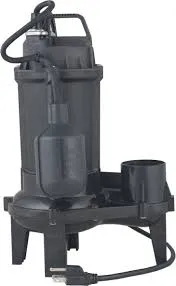Tatar
- Afrikaans
- Albanian
- Amharic
- Arabic
- Armenian
- Azerbaijani
- Basque
- Belarusian
- Bengali
- Bosnian
- Bulgarian
- Catalan
- Cebuano
- Corsican
- Croatian
- Czech
- Danish
- Dutch
- English
- Esperanto
- Estonian
- Finnish
- French
- Frisian
- Galician
- Georgian
- German
- Greek
- Gujarati
- Haitian Creole
- hausa
- hawaiian
- Hebrew
- Hindi
- Miao
- Hungarian
- Icelandic
- igbo
- Indonesian
- irish
- Italian
- Japanese
- Javanese
- Kannada
- kazakh
- Khmer
- Rwandese
- Korean
- Kurdish
- Kyrgyz
- Lao
- Latin
- Latvian
- Lithuanian
- Luxembourgish
- Macedonian
- Malgashi
- Malay
- Malayalam
- Maltese
- Maori
- Marathi
- Mongolian
- Myanmar
- Nepali
- Norwegian
- Norwegian
- Occitan
- Pashto
- Persian
- Polish
- Portuguese
- Punjabi
- Romanian
- Russian
- Samoan
- Scottish Gaelic
- Serbian
- Sesotho
- Shona
- Sindhi
- Sinhala
- Slovak
- Slovenian
- Somali
- Spanish
- Sundanese
- Swahili
- Swedish
- Tagalog
- Tajik
- Tamil
- Tatar
- Telugu
- Thai
- Turkish
- Turkmen
- Ukrainian
- Urdu
- Uighur
- Uzbek
- Vietnamese
- Welsh
- Bantu
- Yiddish
- Yoruba
- Zulu
Telephone: +86 13120555503
Email: frank@cypump.com
Окт . 13, 2024 17:38 Back to list
Different Varieties of Slurry Pumps and Their Applications in Industries
Types of Slurry Pumps
Slurry pumps are essential in various industries where the transportation of abrasive and heavy mixtures is required. These pumps are designed to move slurries—mixtures of solid particles and liquid—efficiently and reliably, overcoming the challenges associated with their unique compositions. Understanding the different types of slurry pumps can help businesses choose the right equipment for their specific applications.
1. Horizontal Slurry Pumps
Horizontal slurry pumps are among the most common types used in industrial applications. These pumps have a horizontal configuration where the motor and pump are positioned side by side. The design allows for easy maintenance and is suitable for medium to high flow rates. Horizontal slurry pumps are primarily used in applications where the slurry is not highly abrasive, such as in the mining and mineral processing industries. They can handle a wide range of slurries, from those found in dredging to tailings removal.
2. Vertical Slurry Pumps
Unlike horizontal slurry pumps, vertical slurry pumps are installed in a vertical orientation. This type is particularly effective for applications where the slurry needs to be pumped from a deep pit or where space is limited. Vertical slurry pumps are often submerged, which means they can operate effectively in situations where the liquid level is variable. These pumps are suitable for heavy-duty applications such as in the mining, pulp and paper, and wastewater treatment sectors.
3. Submersible Slurry Pumps
Submersible slurry pumps are specifically designed to be submerged in the slurry they are pumping. They are ideal for dewatering applications and are commonly used in construction sites, mining operations, and sewage systems. These pumps can move large volumes of slurry while handling solid particles effectively. Their robust design allows them to operate efficiently in challenging conditions, making them a reliable choice in many industrial processes.
4
. High-Pressure Slurry Pumpstypes of slurry pumps

In situations where slurries need to be transported over longer distances or up inclines, high-pressure slurry pumps come into play. These pumps are designed to generate higher pressures, allowing them to move thick and viscous slurries efficiently. Industries such as mining and chemical processing often rely on high-pressure slurry pumps to ensure their materials reach the desired destination without significant pressure loss.
5. Centrifugal Slurry Pumps
Centrifugal slurry pumps use a rotating impeller to transfer kinetic energy to the fluid, allowing it to move through the pump. This type is widely used due to its efficiency and ability to handle a variety of slurries. Centrifugal slurry pumps can be configured for either horizontal or vertical applications, providing versatility in terms of installation and operation. They are especially effective for low to medium viscosity slurries.
6. Peristaltic Slurry Pumps
Peristaltic pumps offer a different approach to slurry pumping by utilizing a rotating mechanism that compresses a flexible hose. This design allows for a gentle and consistent flow, making it ideal for sensitive slurries or materials that can be damaged by traditional pumping methods. Peristaltic slurry pumps are commonly used in the food industry, pharmaceuticals, and anywhere where a contamination-free environment is crucial.
7. Diaphragm Slurry Pumps
Diaphragm slurry pumps operate using a diaphragm that flexes to create suction and displacement of the slurry. They are best suited for applications where slurries may contain large solids or when dealing with hazardous materials. These pumps are highly versatile and can handle aggressive chemicals, making them suitable for the mining, oil, and gas industries.
Conclusion
Selecting the right type of slurry pump is essential for ensuring efficient operation and minimizing maintenance costs. Understanding the different types of slurry pumps and their applications can help companies make informed decisions based on their specific requirements. Whether it’s for handling abrasive materials in a mining operation or managing wastewater in a treatment plant, choosing the right slurry pump can lead to significant improvements in operational efficiency and reliability. Each type of pump presents unique advantages, and the right choice will ultimately depend on the nature and requirements of the slurry being transported.
-
High-Performance Air Pumps for Sand & Gravel | Efficient Transport
NewsAug.03,2025
-
ISG Series Vertical Pipeline Pump - Chi Yuan Pumps Co., LTD.|Energy Efficiency, Corrosion Resistance
NewsAug.03,2025
-
ISG Series Pipeline Pump - Chi Yuan Pumps | Energy Efficiency&Compact Design
NewsAug.03,2025
-
ISG Series Vertical Pipeline Pump - Chi Yuan Pumps Co., LTD.|High Efficiency, Low Noise, Durable
NewsAug.02,2025
-
ISG Series Vertical Pipeline Pump - Chi Yuan Pumps | High Efficiency, Low Noise
NewsAug.02,2025
-
ISG Series Vertical Pipeline Pump- Chi Yuan Pumps Co., LTD.|High Efficiency&Compact Design
NewsAug.02,2025










